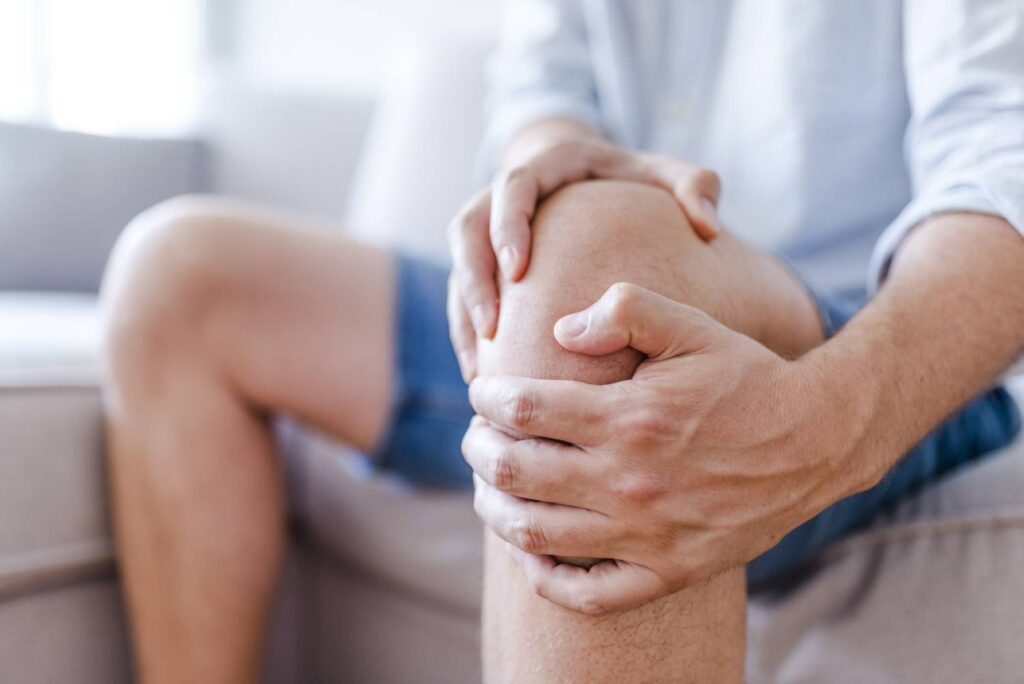If you’ve ever felt a dull ache or sharp pain in your knees, you’re not alone. Many people experience knee discomfort as they age, and sometimes it’s more than just wear and tear—it could be the early signs of knee arthritis.
But don’t worry—recognizing the symptoms early and understanding the causes can help you manage the pain and prevent further damage. In this blog, we’ll take a look at the early signs of knee arthritis, how it impacts your daily life, and most importantly, the treatments and remedies that can help you feel better. Ready to get back to moving freely? Keep reading!
Contents
- 1 What Causes Arthritis in Knees?
- 2 What Are the Symptoms of Arthritis in Your Knee?
- 3 How Knee Arthritis Affects Daily Life
- 4 What is the Best Treatment for Knee Arthritis?
- 5 Is Walking Good if You Have Arthritis in Your Knees?
- 6 Home Remedies to Relieve Knee Pain Due To Arthritis
- 7 Easy Exercises to Get Relief From Knee Arthritis
- 8 Conclusion
What Causes Arthritis in Knees?
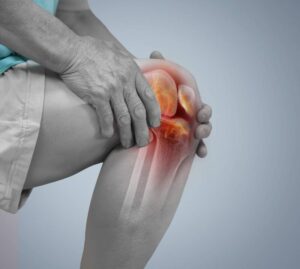 Knee arthritis can develop for several reasons. Here’s a quick breakdown of the main causes:
Knee arthritis can develop for several reasons. Here’s a quick breakdown of the main causes:
- Age: As we get older, natural wear and tear on cartilage leads to osteoarthritis.
- Genetics: Family history can increase the likelihood of developing knee arthritis.
- Injury: Past knee injuries (fractures, ligament tears) can lead to arthritis over time.
- Obesity: Extra weight puts stress on the knee joints, speeding up cartilage wear.
- Rheumatoid Arthritis: An autoimmune condition that causes joint inflammation and damage.
- Joint Deformities: Abnormalities in knee structure can increase the risk of arthritis.
- Overuse: Repetitive motion or high-stress activities (running, squatting) can wear down the knee cartilage.
Recognizing the cause of your knee arthritis helps in managing symptoms and preventing further damage.
What Are the Symptoms of Arthritis in Your Knee?
Knee arthritis can cause various symptoms that affect movement and daily activities. Here are the common signs to watch out for:
-
Pain
Persistent or intermittent pain in the knee, especially during movement or after standing for long periods. -
Stiffness
Difficulty bending or straightening the knee, especially in the morning or after resting. -
Swelling
Noticeable swelling around the knee joint, which may worsen after activity. -
Reduced Range of Motion
Limited movement in the knee, making it hard to perform normal tasks like walking, climbing stairs, or squatting. -
Tenderness
The knee feels tender to the touch, especially around the joint or where the inflammation is present. -
Crunching or Popping Sounds
A grinding or popping sensation when moving the knee, which indicates damage to the cartilage. -
Warmth
The knee may feel warm to the touch due to inflammation.
If you notice these symptoms, it’s important to consult a healthcare provider for an accurate diagnosis and effective treatment plan.
How Knee Arthritis Affects Daily Life
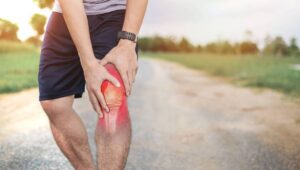 Knee arthritis can significantly impact your ability to carry out everyday activities. Here’s how it affects daily life:
Knee arthritis can significantly impact your ability to carry out everyday activities. Here’s how it affects daily life:
- Pain and stiffness make it harder to walk for long distances or even across the room.
- Knee arthritis can make climbing stairs painful and difficult, often requiring extra effort or assistance.
- Standing for extended periods can cause discomfort and swelling in the knee, making it hard to stay on your feet.
- Simple tasks like bending down to pick something up or squatting can become painful and challenging.
- The pain and stiffness can make it hard to get in or out of a car, especially if you have to bend your knee deeply.
- Enjoying hobbies or physical activities such as running, yoga, or playing sports becomes increasingly difficult due to pain and limited mobility.
Knee arthritis doesn’t just affect the knee—it can disrupt your routine, reduce independence, and lower your quality of life. Managing symptoms with the right treatment and lifestyle adjustments is key to maintaining independence and staying active.
What is the Best Treatment for Knee Arthritis?
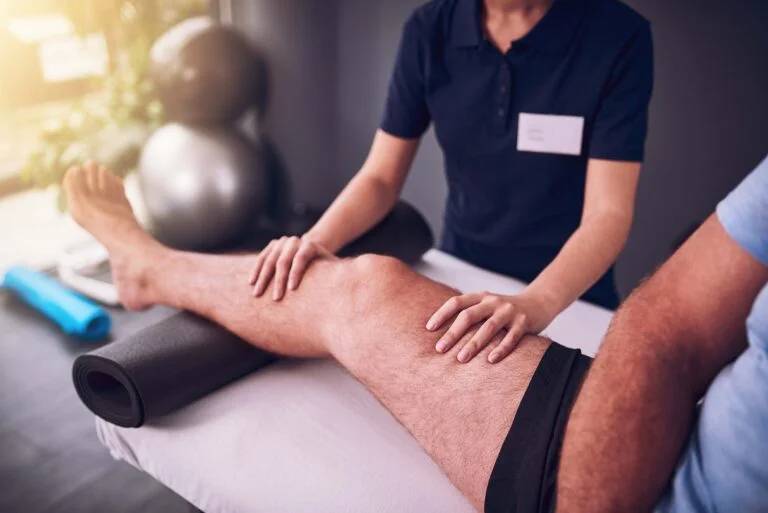
Treating knee arthritis involves a combination of medications, lifestyle changes, and sometimes medical procedures to manage pain and improve joint function. Here’s what works best:
-
Medications
-
-
NSAIDs (Nonsteroidal Anti-Inflammatory Drugs): Over-the-counter pain relievers like ibuprofen can reduce pain and inflammation.
-
Corticosteroids: Injections into the knee can provide relief for inflammation and pain during flare-ups.
-
DMARDs (Disease-Modifying Antirheumatic Drugs): Used for inflammatory types like rheumatoid arthritis, these drugs help slow down the disease.
-
-
-
Physical Therapy
A physical therapist can guide you through exercises that help improve flexibility, strengthen muscles around the knee, and relieve pain. -
Weight Management
Maintaining a healthy weight reduces stress on the knee joint, easing pain and preventing further damage. -
Lifestyle Changes
Low-impact exercises like walking, swimming, and cycling can keep the knee moving without causing additional strain. -
Surgical Options
In severe cases, procedures like knee arthroscopy (removing damaged tissue) or knee replacement surgery may be recommended to restore function and relieve pain. -
Braces and Supports
Wearing a knee brace can provide support and reduce pain during daily activities and physical exercise.
Combining these treatments helps in managing symptoms and improving quality of life. Consulting with a healthcare provider can help you find the best approach for your specific needs.
Is Walking Good if You Have Arthritis in Your Knees?
Yes, walking can be a great form of exercise for people with knee arthritis, as long as it is done correctly. Here’s why walking is beneficial and how to do it safely:
- It helps maintain joint flexibility and keeps the muscles around the knee strong.
- Regular walking helps improve the range of motion in your knees, reducing stiffness and increasing flexibility over time.
- Walking promotes better blood circulation, which helps in healing and reduces inflammation in the knee joint.
Home Remedies to Relieve Knee Pain Due To Arthritis
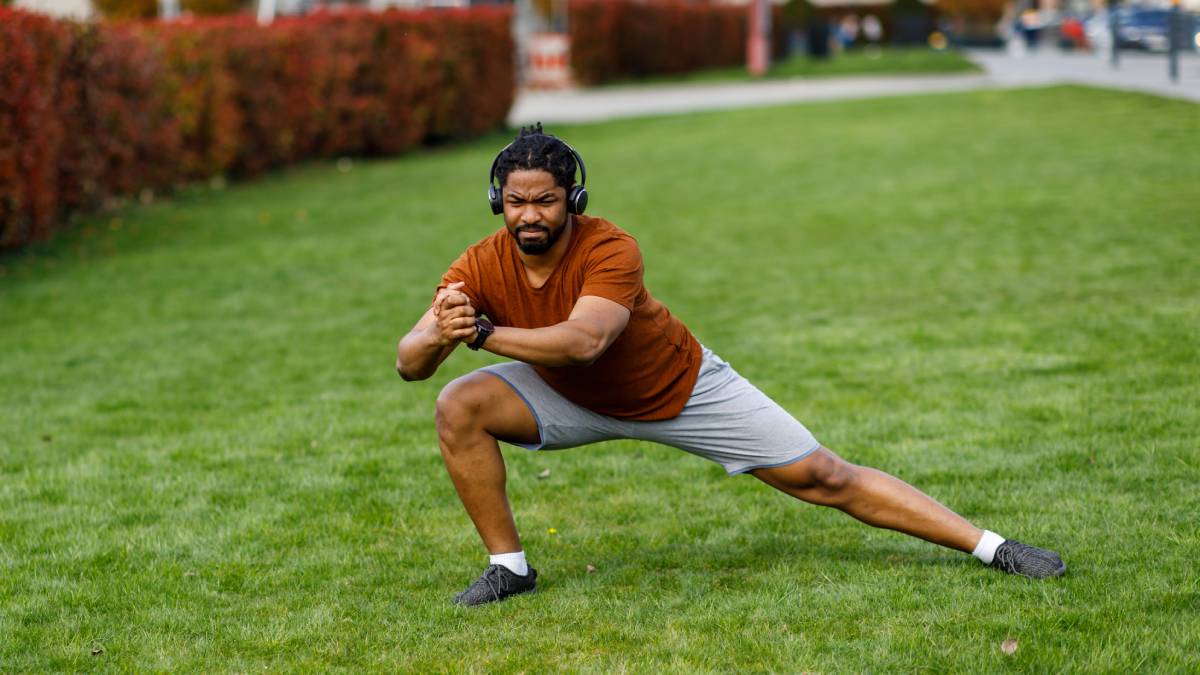
Managing knee arthritis pain at home can be very effective when combined with other treatments. Here are some simple and natural remedies to help relieve pain and improve mobility:
-
Ice and Heat Therapy
-
Ice: Apply an ice pack wrapped in a cloth to your knee for 15-20 minutes to reduce swelling and numb the pain, especially after activity.
-
Heat: Use a heating pad or warm towel to relax tight muscles and improve blood flow. Apply for 15-20 minutes to soothe stiffness and pain.
-
-
Elevate the Knee to reduce swelling
Prop your leg up on a pillow, ensuring that your knee is above your heart level to help with fluid drainage. -
Gentle Stretches and Exercise
Perform low-impact exercises and gentle stretches, such as walking, swimming, or leg lifts, to improve flexibility, strengthen muscles around the knee, and reduce stiffness. -
Massage
Gently massaging the knee with a soothing cream or oil can improve circulation and reduce inflammation. This helps relax the muscles around the joint and provides temporary pain relief. -
Turmeric and Ginger
Both turmeric and ginger are known for their anti-inflammatory properties. Drinking ginger or turmeric tea regularly, or even applying turmeric paste to the affected area, can help reduce inflammation and relieve pain. -
Epsom Salt Bath
Soaking your knee in warm water with Epsom salts helps to relax muscles and joints, reduce swelling, and provide pain relief. -
Compression Bandage
Use an elastic compression bandage or knee sleeve to help reduce swelling and provide support to the knee joint. Make sure it’s not too tight to avoid restricting blood flow. -
Maintaining a Healthy Weight
Keeping your weight in check helps reduce the strain on your knee joints, easing pain and preventing further damage. Balanced meals and regular activity can assist in weight management. -
Herbal Remedies
Capsaicin cream (from chili peppers) has been shown to reduce joint pain. Apply a small amount of the cream to the knee to alleviate discomfort.
Incorporating these remedies into your daily routine can help you manage knee arthritis pain naturally. However, if the pain persists or worsens, it’s important to seek professional treatment to prevent further damage to the joint.
Easy Exercises to Get Relief From Knee Arthritis
Here are some simple exercises to help relieve knee arthritis pain and improve mobility. Follow these easy steps:
Straight Leg Raises
-
-
How to do it:
-
Lie flat on your back with one knee bent and the other leg straight.
-
Slowly raise your straight leg up to the level of the bent knee.
-
Hold for 5 seconds, then slowly lower your leg.
-
Repeat 10-15 times on each leg.
-
-
Why it helps: Strengthens the muscles around the knee without putting pressure on the joint.
-

Seated Leg Extensions
-
-
How to do it:
-
Sit on a chair with your feet flat on the floor.
-
Slowly extend one leg out straight and hold for 5 seconds.
-
Lower the leg back to the floor.
-
Repeat 10-15 times on each leg.
-
-
Why it helps: Targets the thigh muscles to improve knee strength and flexibility.
-

Step-Ups
-
-
How to do it:
-
Find a low step or platform.
-
Step up with one foot, bringing the other foot to join it.
-
Step down one foot at a time.
-
Repeat 10-15 times on each leg.
-
-
Why it helps: Strengthens the muscles around the knee and improves coordination.
-
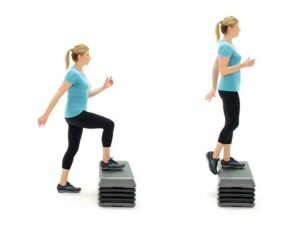
Hamstring Curls
-
-
How to do it:
-
Stand straight and hold onto a stable surface for balance.
-
Slowly bend one knee, bringing your foot toward your buttocks.
-
Hold for 5 seconds, then lower your leg.
-
Repeat 10-15 times on each leg.
-
-
Why it helps: Strengthens the hamstrings, providing more support to the knee.
-
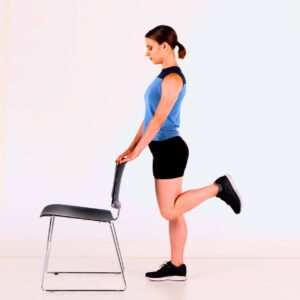
Wall Squats
-
-
How to do it:
-
Stand with your back against a wall and feet shoulder-width apart.
-
Slowly lower your body, as if sitting in a chair, until your knees are at a 90-degree angle.
-
Hold for 5-10 seconds, then rise back up.
-
Repeat 10-15 times.
-
-
Why it helps: Strengthens the quadriceps and helps with knee stability.
-

Calf Raises
-
-
How to do it:
-
Stand with your feet flat on the floor.
-
Slowly raise your heels so you’re standing on your toes.
-
Hold for 5 seconds, then lower your heels back down.
-
Repeat 10-15 times.
-
-
Why it helps: Strengthens the calves and improves balance.
-
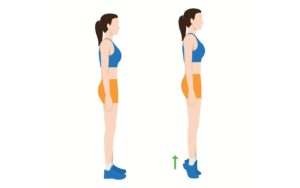
Swimming or Water Aerobics
-
-
How to do it:
-
Swim or participate in water aerobics for 20-30 minutes.
-
The water helps support your weight and reduces stress on the knees.
-
-
Why it helps: A full-body workout that strengthens muscles without aggravating knee pain.
-

These exercises are a great way to manage knee arthritis pain and keep your knees strong and flexible. Always consult with a healthcare professional before starting any new exercise routine.
Conclusion
Dealing with knee arthritis can be challenging, but with the right exercises, lifestyle adjustments, and medical guidance, you can manage the pain and improve your mobility. Regular movement, even gentle exercises, can make a huge difference in reducing discomfort and preventing further joint damage.
If you’re struggling with knee arthritis and need expert guidance on managing your symptoms, don’t hesitate to consult an online orthopedician at MantraDoc. Our specialists are here to help you develop a personalized plan to relieve pain and improve your quality of life.
👉 Click here to consult an online orthopedician today!

